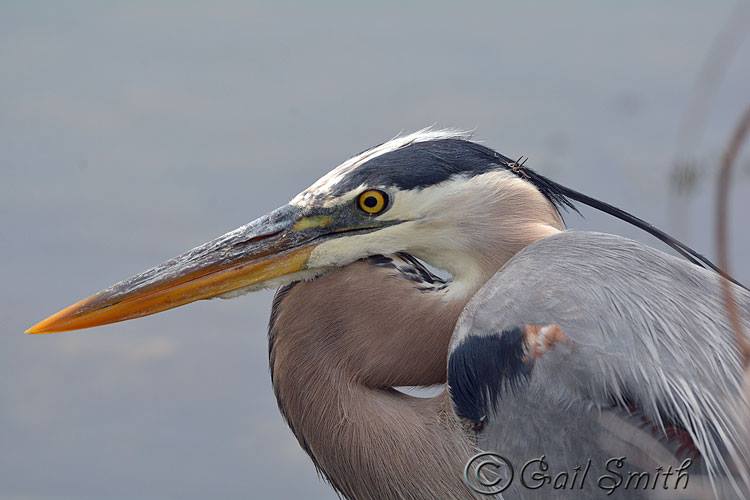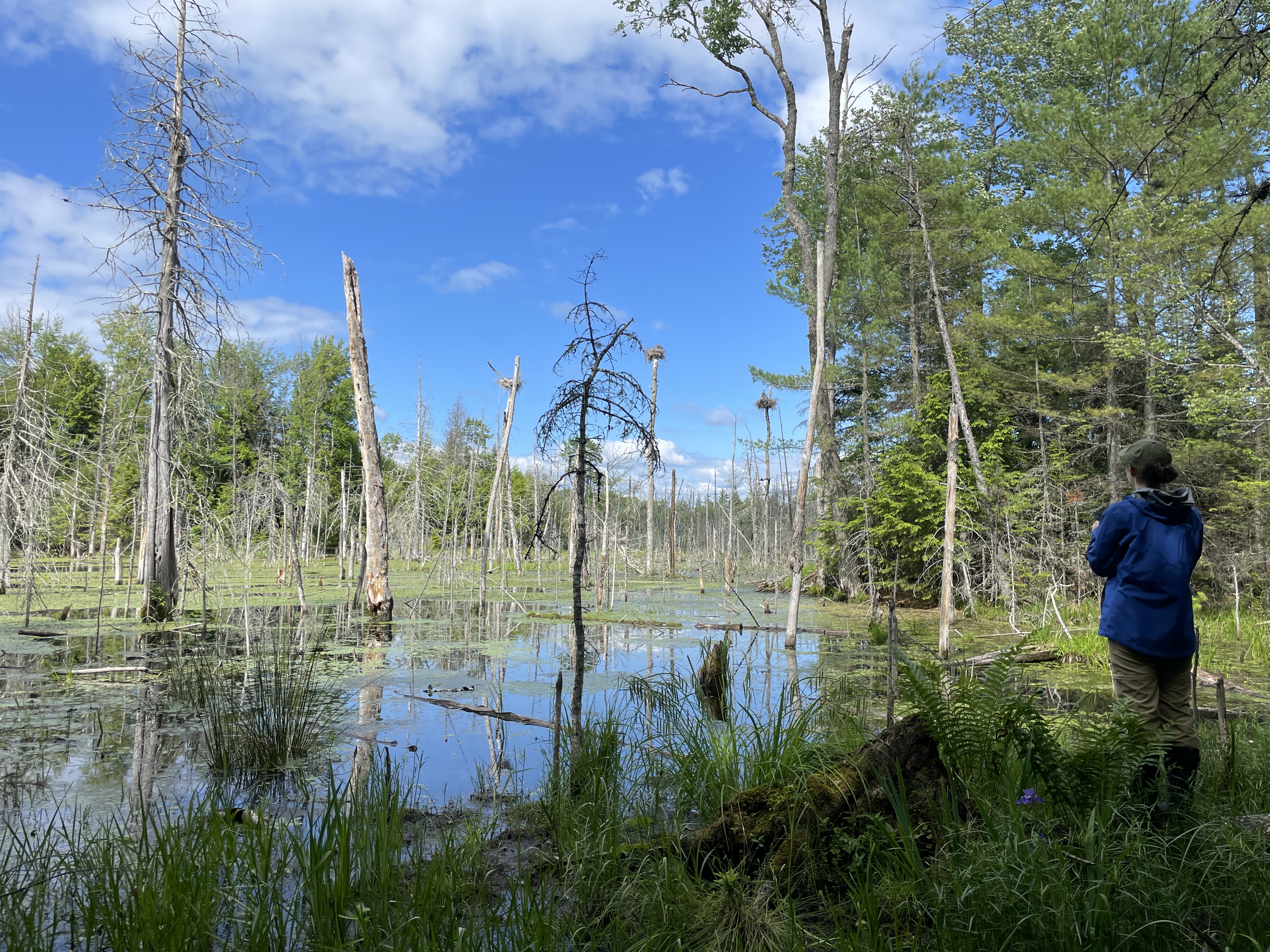March 25, 2025 at 8:37 am
Herons Return with Spring
As the wind whips the whispy tops of white pines in my yard, I think about our earliest arriving great blue herons who have already begun renovating their nests from last year. I imagine those who nest in live white pine stands clinging to the branches wondering what was the rush? Just as they say the early bird gets the worm, the early great blue heron secures prime real estate for raising its young.
Not all great blue herons arrive in mid-March, but it is the start of their steady trickle into the state from warmer climes. Within a month, most will be back and strutting their stuff to win over a mate. Their bills are bright yellow, and their plumes are crisp and fresh to punctuate their courtship displays.

To give them space and privacy to successfully establish a pair bond, build a nest, and lay eggs, volunteers with the Heron Observation Network will wait until early May to trek to the colony’s edge with binoculars and scopes to observe the nesting herons. By then the herons are less susceptible to disturbance and can tolerate their curious stares.
Results from the 2024 Season
Before embarking on our 17th year of this community science effort, I’d like to share some stats from the 2024 season.
In 2024, 66 volunteers surveyed 92 great blue heron colonies. They drive over 5,800 miles and clocked 360 hours to make 162 visits to colonies, often hiking through thick woods and swamps, and donating blood to the black flies and mosquitoes. An additional six staff covered 21 colonies. All this effort contributes to an index of how the population is faring in Maine. Volunteers and staff documented 694 nesting pairs at 55 active colonies last year. There are approximately 250 total heron colonies in the state, including all active, recently active, and historic sites that have been inactive for quite some time. Even with volunteers, we cannot cover all these sites each year. Thus, we do our best to cover those that have been active within the last five years. To account for those that are not surveyed, we include the most recent observation in the index, thus we assume that the recent activity (or inactivity) of those sites not visited is the same in 2024. The following graph shows the trend since we began the program in 2009.
This past year we saw an uptick in our coastal colonies and a downturn in our inland sites resulting in a slight increase statewide from 2023. In fact, the statewide population has trended upwards since 2021. However, populations do naturally fluctuate thus it is important to take the long view when evaluating trends. Since 2009, nesting great blue herons have declined 26% statewide, and 65% along the coast. We plan to continue monitoring colonies with the help of volunteers to get an even longer view of the trend.
Looking Ahead to May
Seeing the fresh coat of snow on all the branches this morning, I’m guessing most volunteers are glad we wait until early May to visit colonies. Although the snow and cold do get replaced by biting insects by then!
